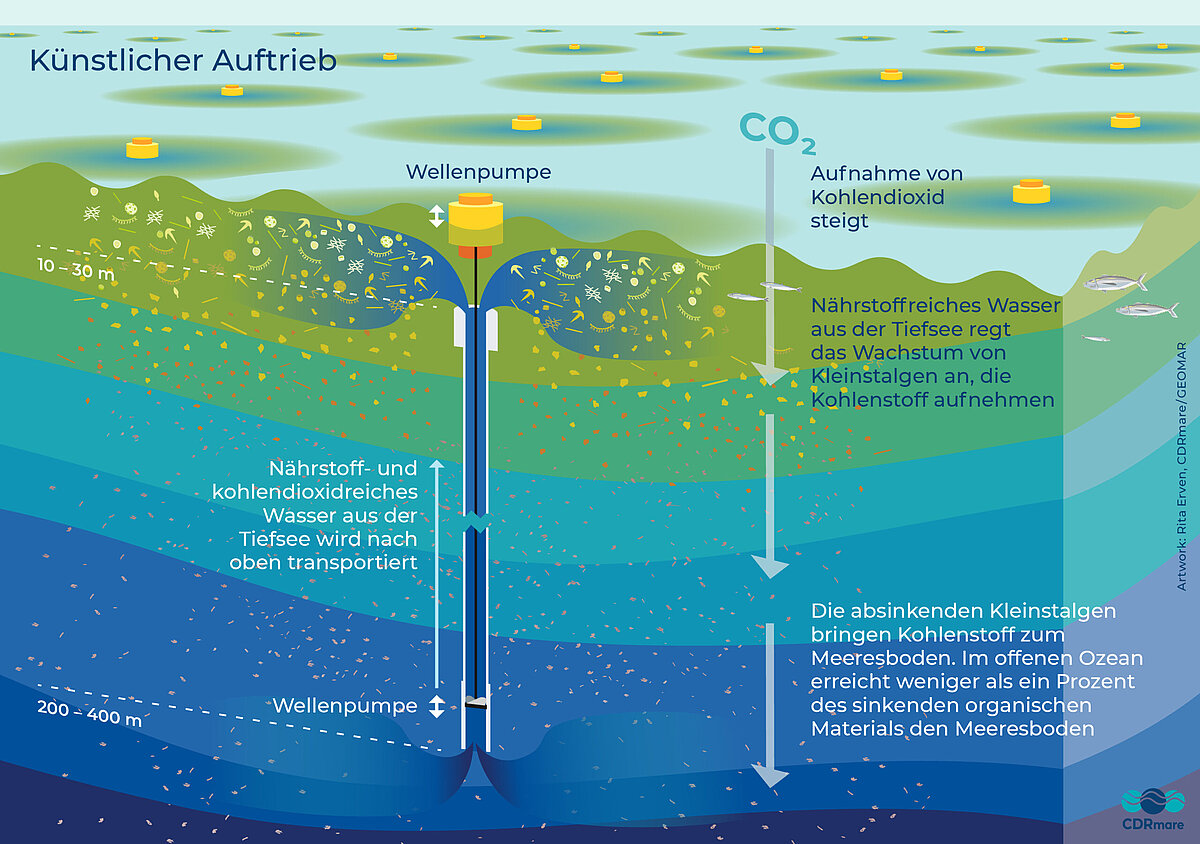Artificial Upwelling
Plant plankton in the ocean provides about half of the world's photosynthetic output and thus absorbs large amounts of CO2 from the atmosphere overall. The algal biomass produced in this way forms the basis for the marine food web. Some of the organic matter sinks to the depths and is bacterially decomposed in the process. In the process, the CO2 bound at the surface is released again. If the sinking material is enriched in carbon relative to the basic building blocks of CO2 and inorganic nutrients dissolved in the seawater, additional CO2 is transported into the deep ocean and stored there. On some coasts, such as off Namibia or Peru, nutrient-rich deep water reaches the ocean surface through natural ocean currents. These upwelling regions are therefore particularly rich in plankton and fish.
In large parts of the ocean, however, phytoplankton is limited by the availability of nutrients such as nitrogen, phosphorus and iron. If the upward transport of nutrient-rich deep water is enhanced by artificial upwelling using pipes or wave pumps, this has a fertilizing effect and can make the waters of ocean deserts more productive. Stimulated growth of phytoplankton can sequester more CO2 in their biomass, increasing the carbon uptake of the upper ocean. When the phytoplankton die and their biomass sinks into the deep ocean, the sequestered carbon can be stored at depth for 100 years or more. If it is technically feasible, ecologically acceptable, and economically viable, the use of artificial upwelling could also make an important contribution to ecologically sustainable marine aquaculture for ecosystem-based fish farming.
Ocean artUp
To date, not much is known about the potential effects of artificial upwelling on marine life and associated cycling of materials. Possible side effects could be the stimulation of harmful algal blooms and the creation of oxygen minimum zones in deeper layers due to sinking organic material. Therefore, researchers at GEOMAR are investigating the effects of artificially generated upwelling of nutrient-rich deep water to the surface using laboratory and field experiments, model calculations and comparative studies. In a first approach of this kind, the Ocean artUp project of funded by the European Research Council, it was investigated from 2017 to 2021 whether such an intervention in the complex marine ecosystem is efficient, ecologically justifiable and economically viable.
Test-ArtUp
The current Test-ArtUp collaboration of the CDRmare research mission aims to investigate, in a unique transdisciplinary approach, the use of artificial buoyancy in terms of its technical application and optimization, its capacity for additional CO2 uptake and long-term storage, the associated environmental risks and ecological side effects, its cost-effectiveness in terms of cost-benefit trade-off, and the legal constraints and governance requirements. The results of Test-ArtUp will be summarized to provide knowledge-based recommendations for the potential implementation of artificial lift for CO2 removal.


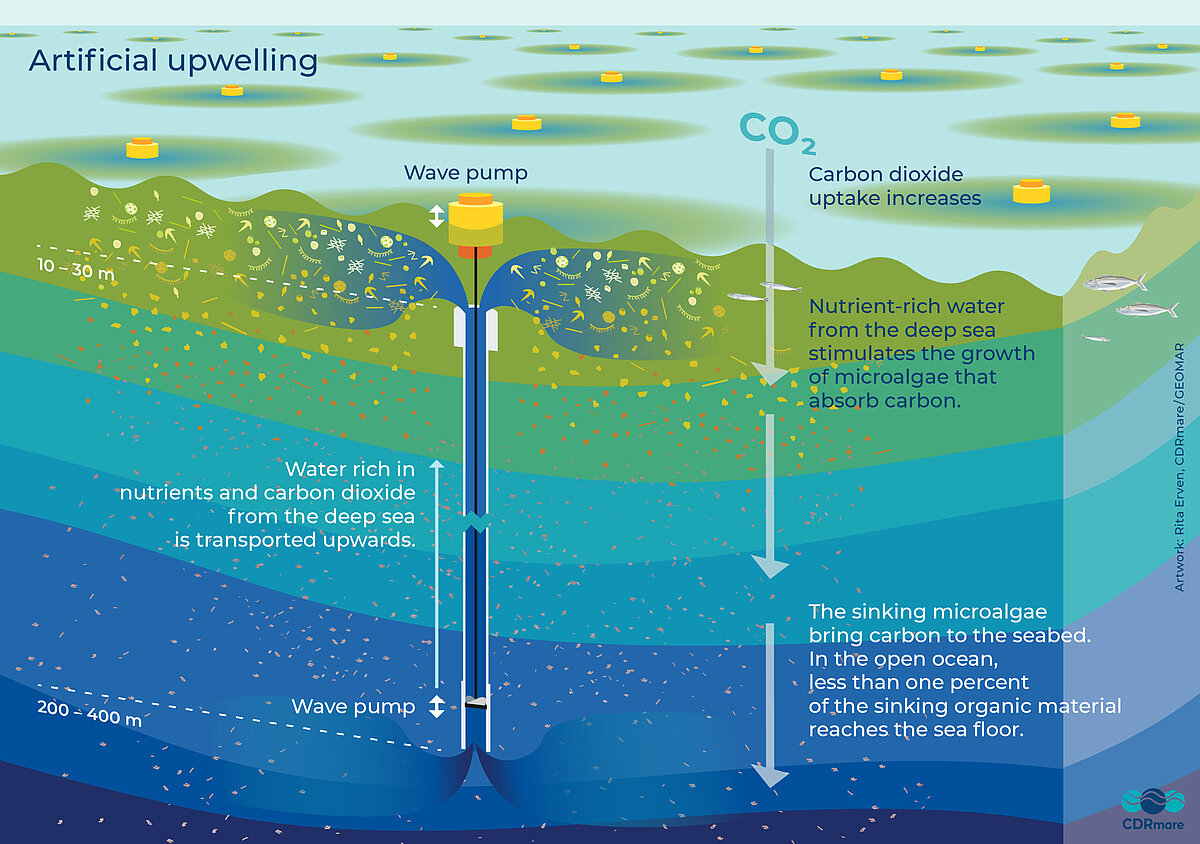
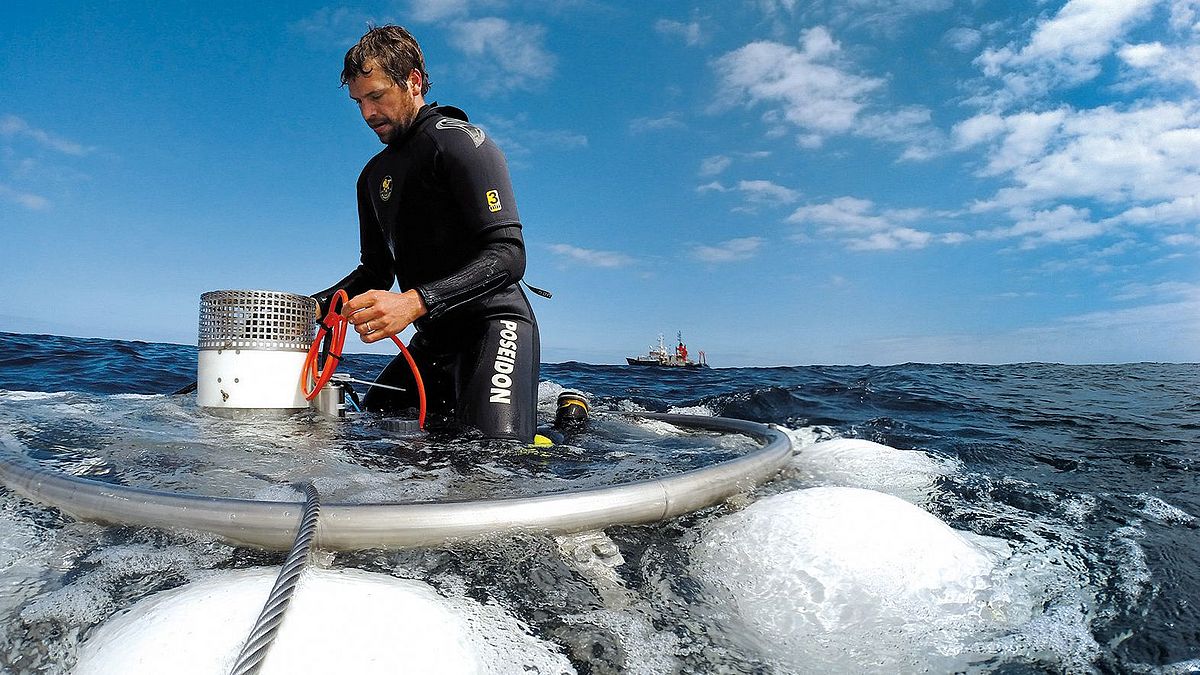
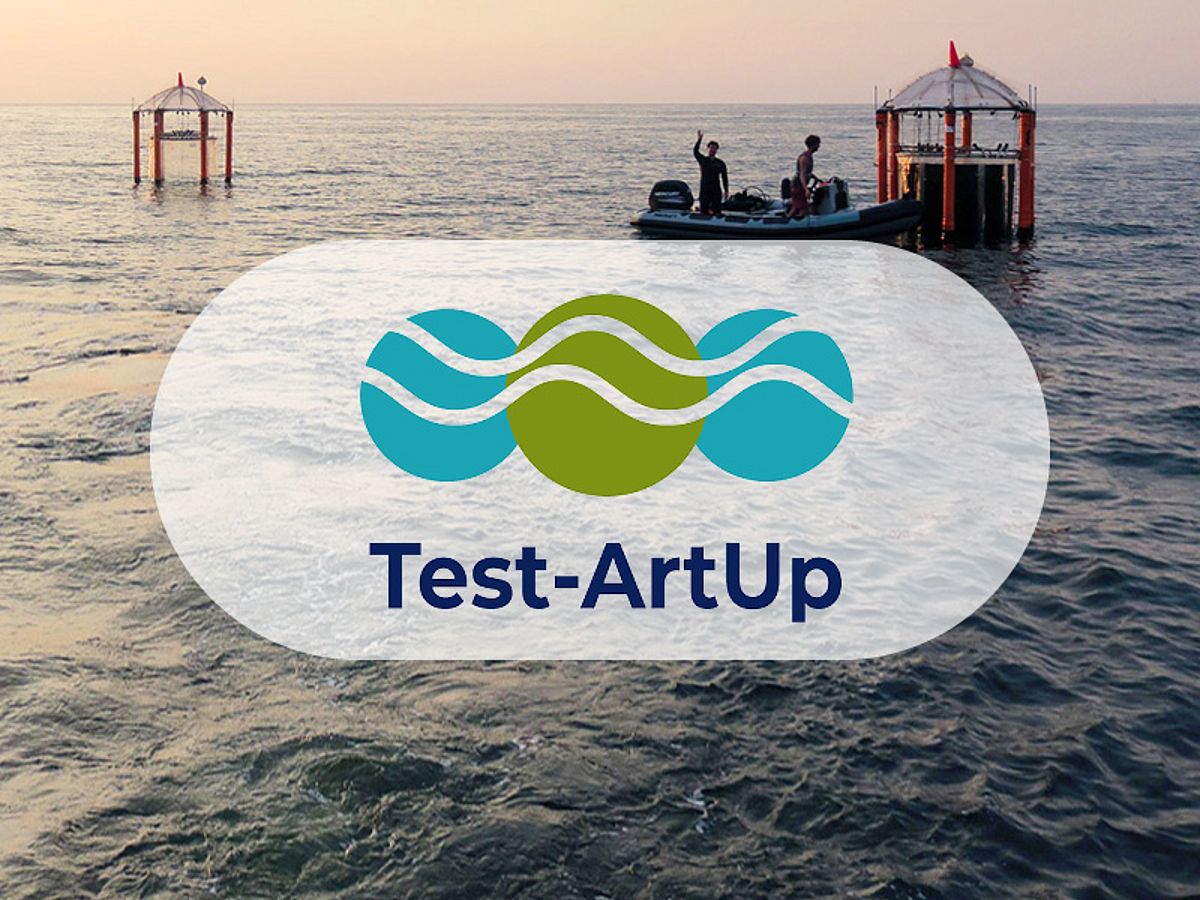

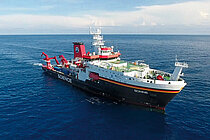
![[Translate to English:] Waves on the Sea](/fileadmin/_processed_/7/1/csm_southern-ocean_1cc8432416.jpg)
